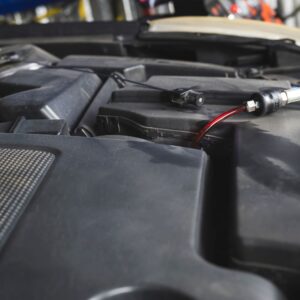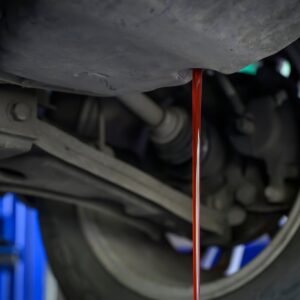Your vehicle’s transmission needs regular and tender loving care if you want to enjoy a smooth and safe ride. One of these processes is thetransmission fluid flush. But there’s another service that you might have mistaken for a flush or possibly not known existed: The transmission fluid exchange.
What’s the Definition of a Transmission Fluid Exchange?
A transmission fluid exchange is a preventive maintenance service. It removes old, dirty, and degraded lubricant. Additionally, it adds new transmission fluid that’s fresh and free of contaminants.
While the somewhat similar transmission fluid flush service drains the entire system, a transmission fluid exchange doesn’t remove all lubricant. It only removes bad and dirty transmission fluid.
Together with other maintenance services, transmission fuel exchanges help keep the transmission in good shape. The benefits extend to the rest of the vehicle. Smoothly shifting between gears reduces the wear on various parts, such as the braking system and suspension.
Why Does Your Vehicle Need a Transmission Fluid Exchange?
Regular transmission fluid exchanges are a vital maintenance service. Driving with bad transmission fluid can result in various problems, many of which come with steep repair bills. If you ignore the issue for too long, you might get a damaged or failed transmission.
Transmission fluid replacement benefits the vehicle. However, you must perform the appropriate procedures and add a suitable transmission fluid.
A transmission fluid exchange is highly recommended if the lubricant shows clear signs of heavy contamination or degradation.
The transmission type also determines how much the vehicle will benefit from transmission fuel exchanges. In manual transmissions, a conventional drain and refill process removes most of the transmission fluid. While a transmission fluid exchange brings benefits, manual transmissions don’t need it very often.
However, the opposite is true of vehicles with automatic transmissions. These cars keep most of their transmission fluid when you drain and refill them. Unfortunately, that also means they retain more old and contaminated transmission fluid.
That’s why automatic vehicles benefit more from transmission fuel exchanges. Performing a transmission fluid exchange on an automatic transmission removes most of the old and dirty lubricant, replacing it with fresh fluid.
What Is Transmission Fluid?
Transmission fluid is a lubricant that protects transmission gears and clutch packs when you shift between gears. It can absorb heat and form a protective layer on surfaces, reducing friction and protecting against damage.
What Does Transmission Fluid Do For Your Car?
Transmission fluid performs several major roles in your vehicle’s transmission. First, it reduces friction between gears and other moving parts. It allows smooth shifting between gears, improving the transmission’s responsiveness.
Next, transmission fluid also reduces heat generated when the moving parts grind against each other. It enables the transmission to run cooler, reducing the strain on parts like the gears.
Furthermore, the transmission fluid absorbs heat generated by the transmission. When the fluid moves to its storage, it carries heat away from the transmission.
Make a habit of checking the transmission fluid level. Add new fluid if the level drops too much. Perform a transmission fluid exchange if the lubricant looks dirty or old.
What Makes Transmission Fluid Go Bad?
Nothing lasts forever, and transmission fluid isn’t an exception. The lubricant gradually degrades and accumulates contaminants. Old and dirty fluids lose their effectiveness at lubricating and cooling moving parts. You must replace bad transmission fluid through a transmission fluid exchange.
There are several factors that hasten transmission fluid degradation. The most common cause is exposure to intense heat. The transmission’s moving parts generate heat that the fluid absorbs. When the temperature exceeds the transmission fluid’s safe operating range, the lubricant undergoes an oxidation process that breaks down its molecules. Oxidized transmission fluid loses its ability to grease surfaces, increasing friction between moving parts.
Contaminants are another frequent reason for the transmission fluid going bad. Dirt and water can enter the transmission through leaks and openings. Furthermore, gears and other moving parts might scrape small particles off metal surfaces, especially if there isn’t enough transmission fluid coating the surfaces. The debris created by metal-on-metal contact often ends up collected by the transmission fluid.
Wherever the contaminants come from, they’re not supposed to appear in the transmission. They make the transmission fluid dirty and less capable of absorbing heat and lubricating moving parts.
Bad transmission fluid forces the transmission to compensate for its shortcomings by working harder. Overworked transmission parts wear out faster and develop issues more frequently.
Old and dirty transmission fluid can lead to issues like slipping gears, poor shifting, and transmission failure. You need to regularly change the transmission fluid if you want the transmission to keep running like it should.
When Should You Perform a Transmission Fluid Exchange?
Fluid change intervals vary according to your vehicle’s make and model, the driving conditions you usually encounter, and what the manufacturer advises. Automatic transmissions also have different recommended intervals compared to manual transmissions.
Some vehicles can go 100,000 miles before needing a transmission fluid exchange. Other vehicles require fresh fluid every 15,000 miles.
Harsh driving conditions can also shorten the recommended interval between transmission fluid exchanges. For example, driving in stop-and-go traffic requires you to constantly shift gears, generating more heat that degrades the transmission fluid.
Towing is another condition that forces the transmission to work harder and hotter. Since the trailer lacks a transmission, the towing vehicle must compensate for what’s effectively deadweight when shifting between gears.
Do you often drive through floods? Water can seep into the transmission through a bad seal. Transmission fluid will go bad if it comes into contact with moisture and dirt.
Check your owner’s manual for the transmission fluid exchange schedule recommended by the manufacturer. Stick to that schedule as closely as possible.
Regular transmission fluid exchanges help keep your vehicle in good shape and extend its overall service life. They’re well worth the time and cost, especially if you drive an automatic car.
Any information provided on this Website is for informational purposes only and is not intended to replace consultation with a professional mechanic. The accuracy and timeliness of the information may change from the time of publication.


































